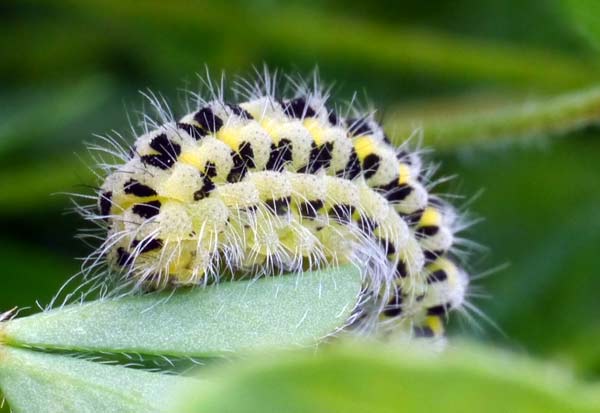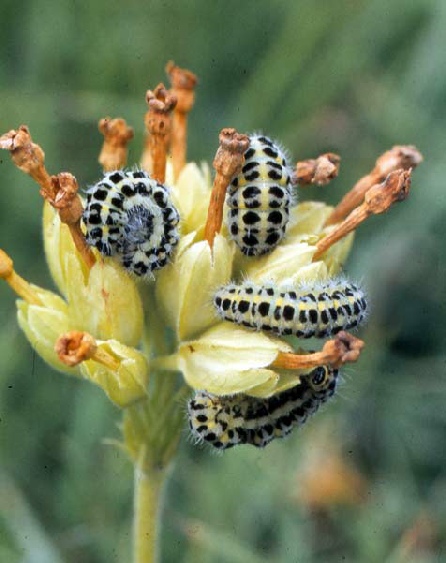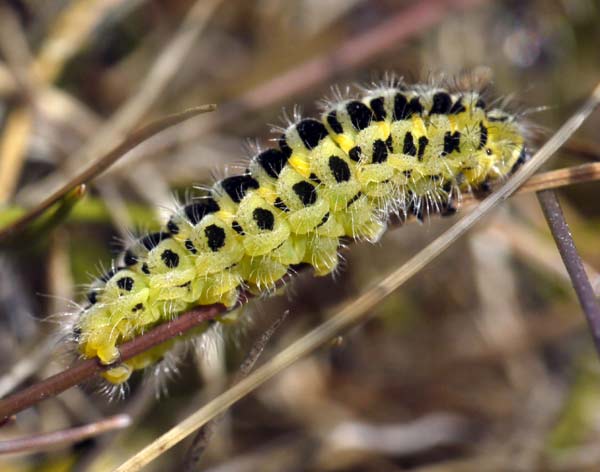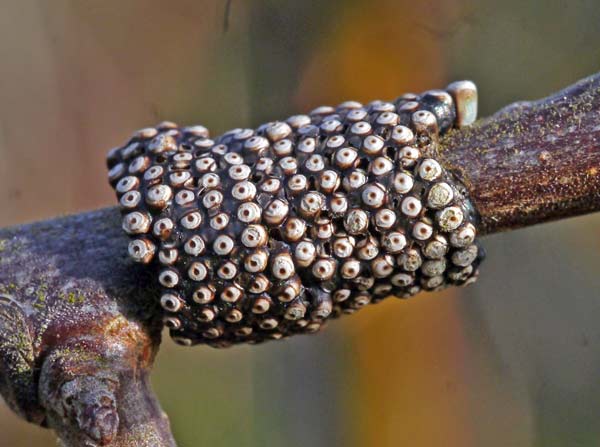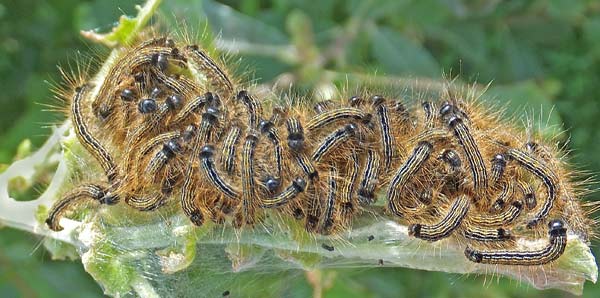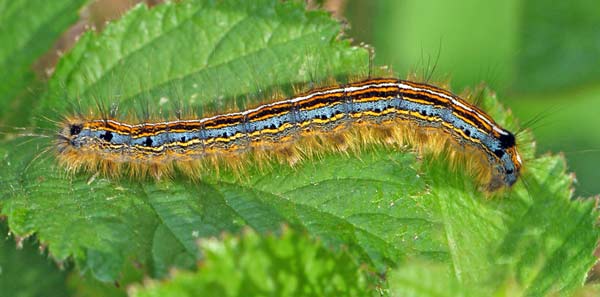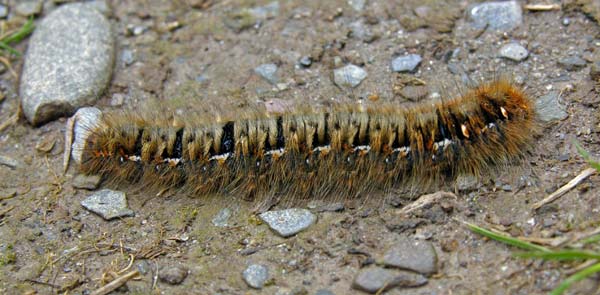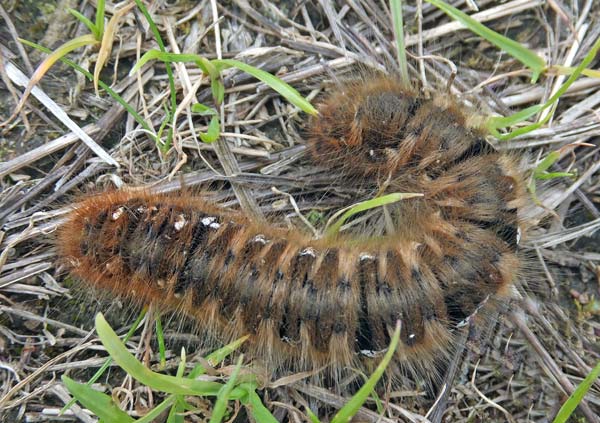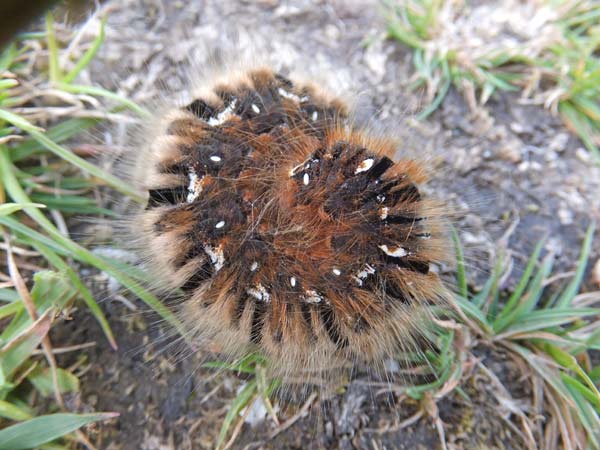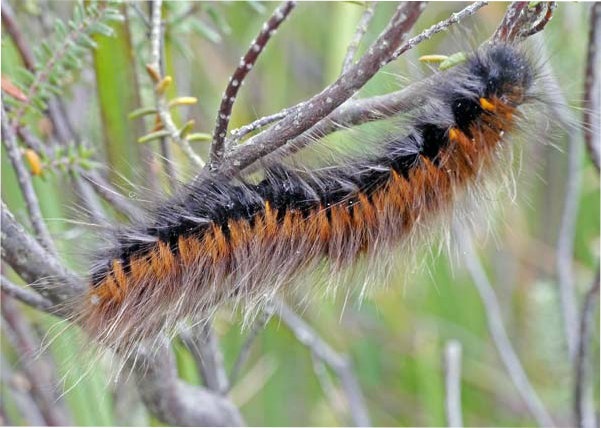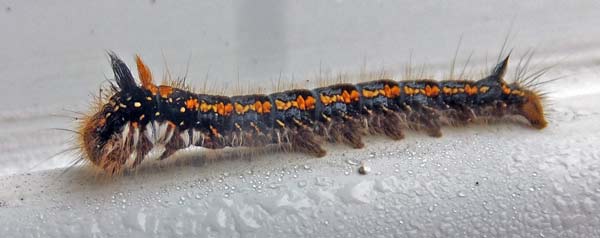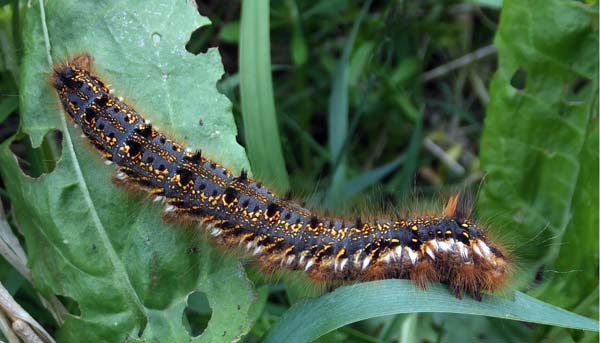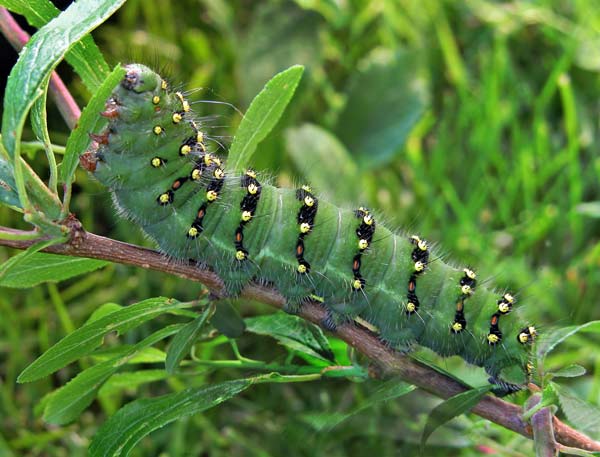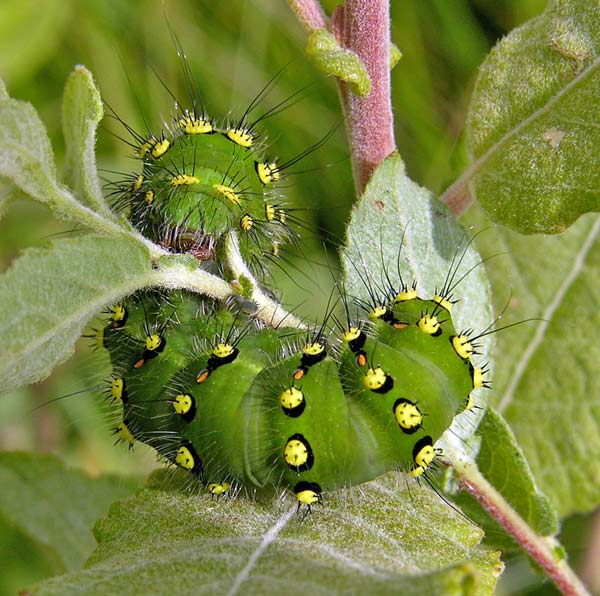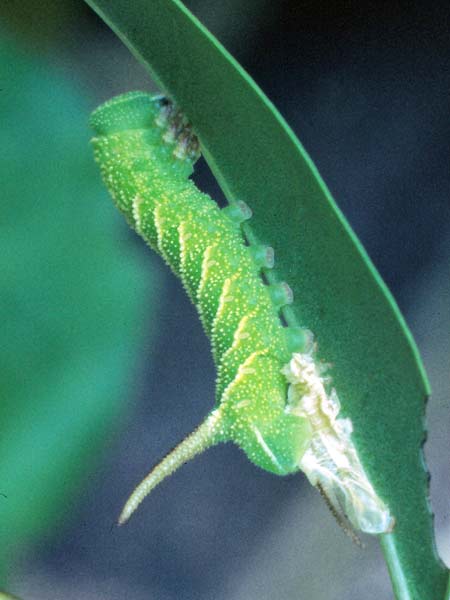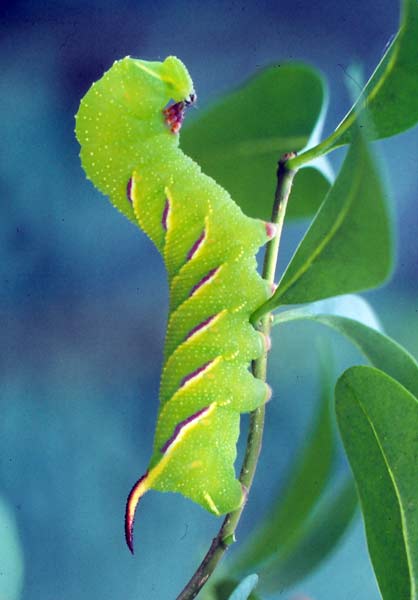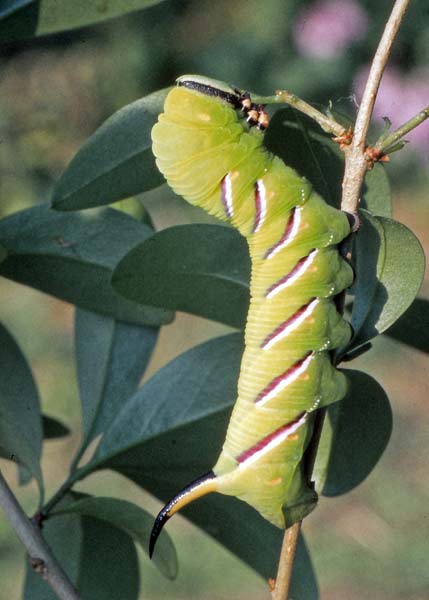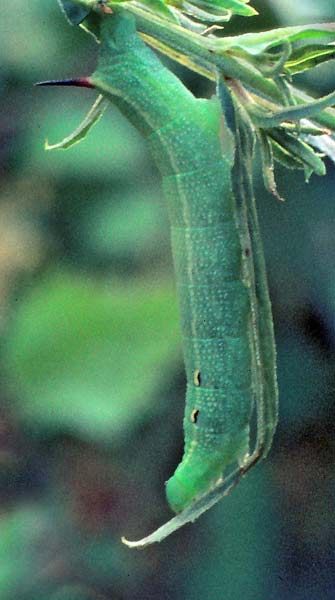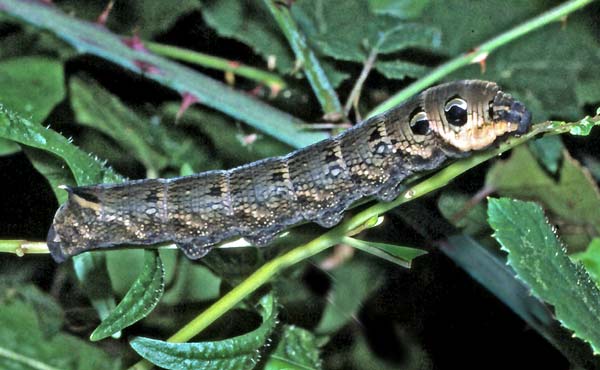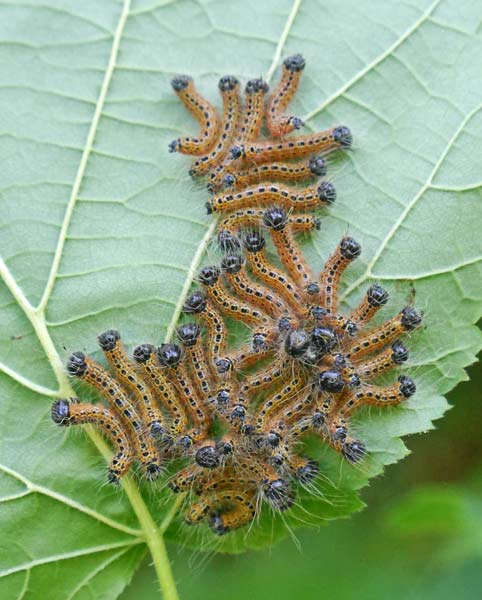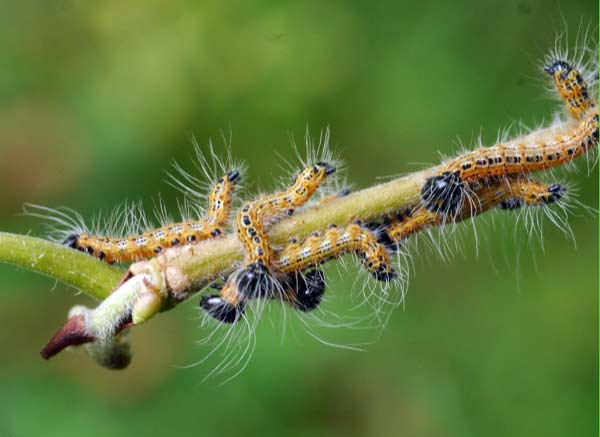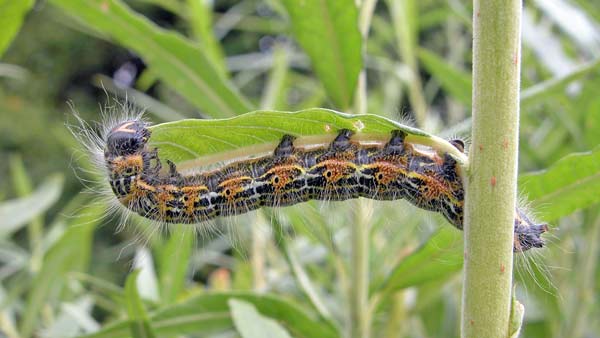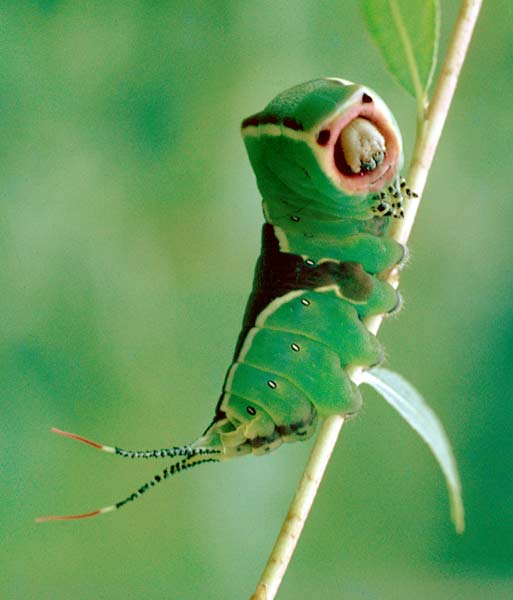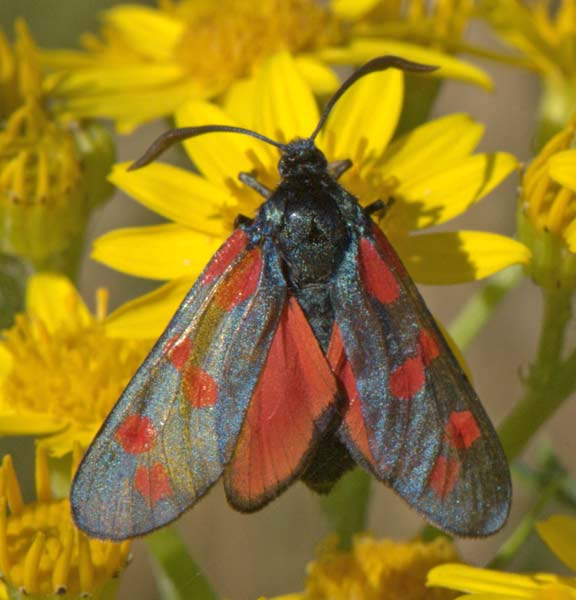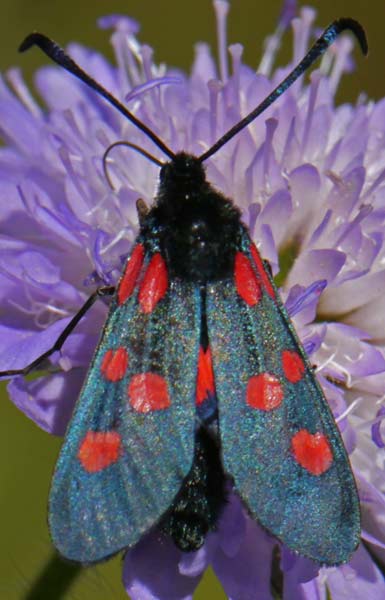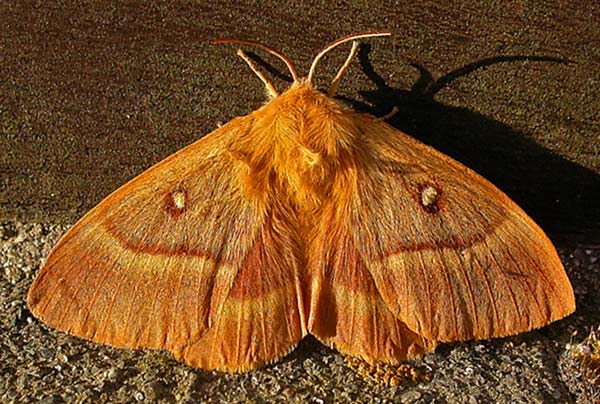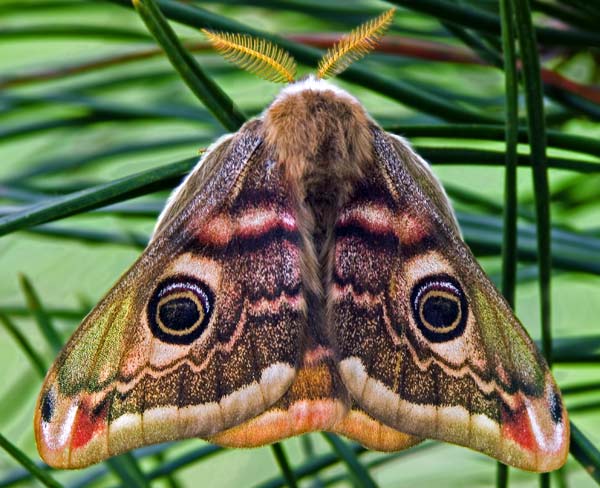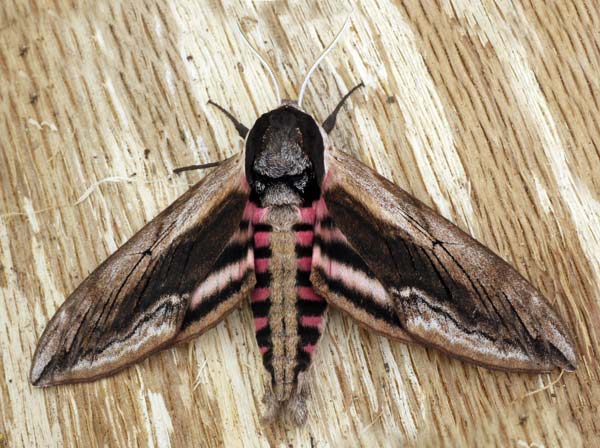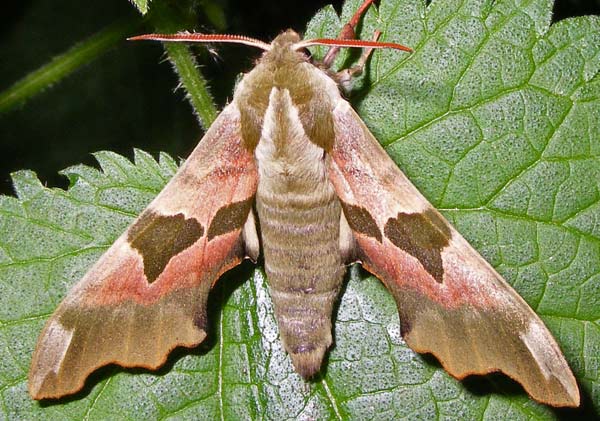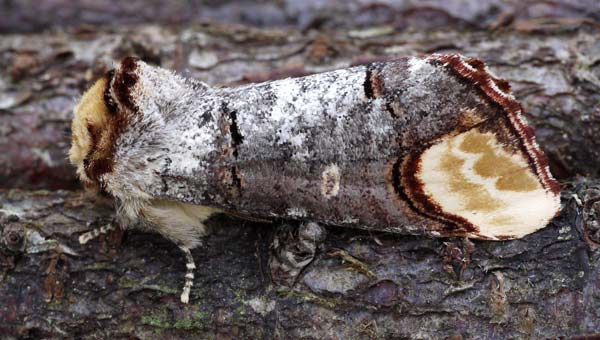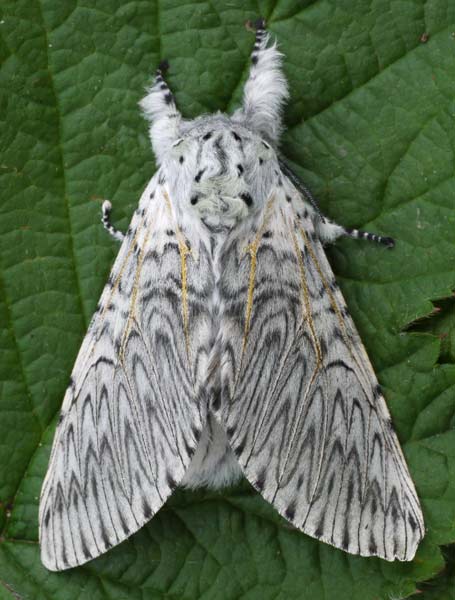Search the site for a moth name or other keyword

To see an image click thumbnail ;
An image can be dragged about by a point just outside
an edge;
To go to another page of larvae click an arrow for ‘Next’ or ‘Previous’
n -
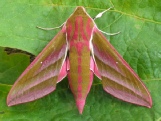

Photo of Lime Hawk-
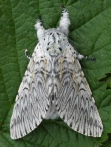


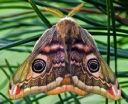


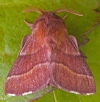

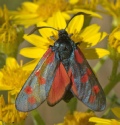
Larvae shown are final instar before pupation unless otherwise stated
Early instar
Common,
Food : Willowherbs -
Larva seen : June to September
Colours
vary from green to black; often change colour from green on moulting.![]() Recognised
by pairs of ‘eyes’.
Recognised
by pairs of ‘eyes’.
1991 Deilephila elpenor Elephant Hawk-
![]()
![]()
1976 Sphinx ligustri Privet Hawk-
![]()
![]()
1634 Malacosoma neustria Lackey Moth
![]()
![]()
Common,
Food : Willows and poplars
Larva seen : June to September
The display of red -
1995 Cerura vinula Puss Moth
![]()
![]()

On the move -
Early instar


Common,
Food :Broad-
Larva
seen : July to October
Early instars live together -
1994 Phalera bucephala Buff-
![]()
![]()




Common,
Food : Privet,Lilac or Ash
Larva seen : June to September
Final instar
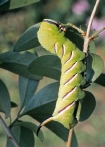
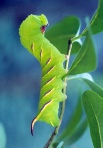
Early instar
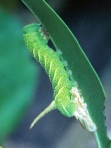
Very early instar
Fairly common in Southern England, South Wales and the Midlands
Food :Lime but also
Birch and Alder
Larva seen: June to September
1979 Mimas tiliae Lime Hawk-
![]()
![]()

1643 Saturnia pavonia Emperor
![]()
![]()
Common,
Food : Various woody plants including Heather, Blackthorn, Willow
Larva seen
: May to August
Some variation in the green background colour and in the amount of
black
markings.
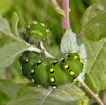

Early instar
Common,
Food : Various grasses and reeds
Larva over-



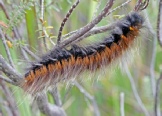
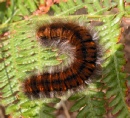
Common, particularly on moorland and near the sea
Food : On moorland heather and winberry;
elsewhere
various herbaceous and woody plants
Larva over-
1638 Macrothylacia rubi Fox Moth ![]()
![]()

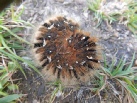
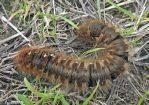
1637 Lasiocampa![]() quercus Oak Eggar
quercus Oak Eggar
![]()
![]()
Common, particularly on moorland
Food : On moorland heather and winberry; elsewhere
various shrubs and young trees
Larva over-

Final instar
Early instar
in web
Eggs on
Blackthorn twig



Common
Food : Various shrubs and young trees including hawthorn and blackthorn.
Larva
seen : April to June
Common
Food : Mainly vetches and clovers
Larva over-
Colour and markings of larvae of these three Burnets are the same but larva of
Common
Food : Mainly birdsfoot trefoil
Larva over-
Larvae of
171 Zygaena lonicerae Narrow-
![]()
![]()
169 Zygaena fili![]() pendulae Six-
pendulae Six-
![]()
![]()
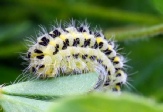
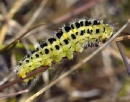
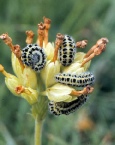

Larvae4. Other Macromoths page 1
Macromoths which are not in the Noctuidae or the
Geometridae

 PREVIOUS
MACROS 2
PREVIOUS
PREVIOUS
MACROS 2
PREVIOUS
1640 Euthrix potatoria Drinker ![]()
![]()
![]()
Early instar
